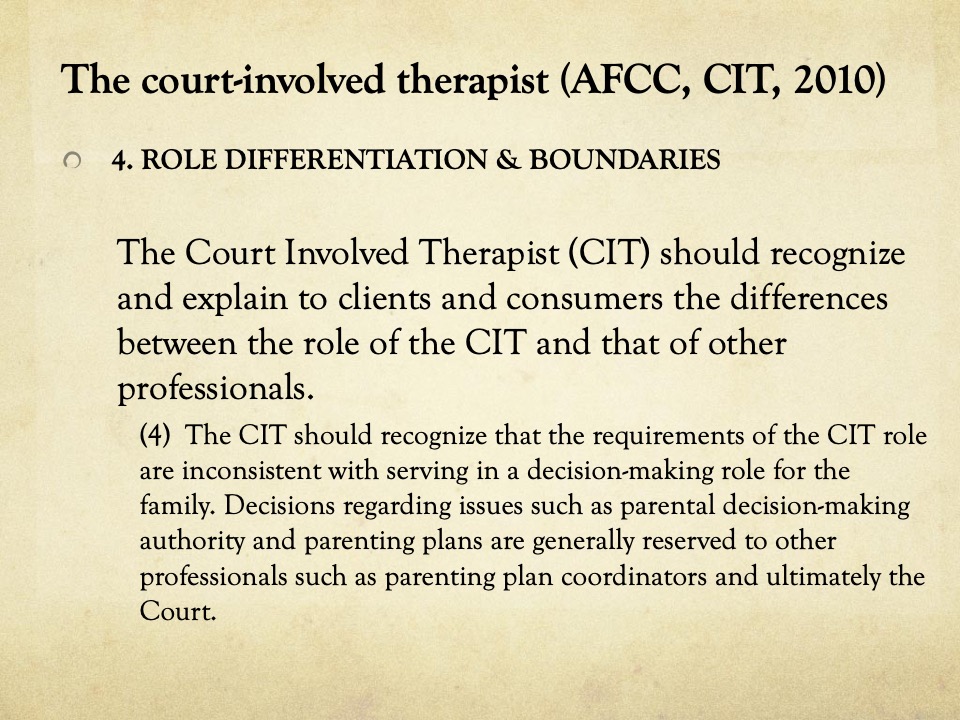Guidelines for Court-Involved Therapists
Let’s look at APA’s Guidelines for Child Custody Evaluations:


The Court-Involved Therapist: Special considerations for court-involved roles with children:
(a) When children are to be involved in treatment, the CIT has an enhanced obligation to avoid biasing conditions in their work such as involvement with only one parent, and must be alert to biasing conditions that may be outside of the CIT’s control. Examples include missing information, external influences on a child, or other exposure to the parental conflict.
(b) Children’s behavior and statements may vary markedly based on the circumstances of treatment.
E.g., who brings the child to treatment?
The child tells a psychologist that he hates mom’s boyfriend; would this report be different if s/o else brought the child?
(c) The CIT has an enhanced obligation to consider multiple treatment hypotheses and be knowledgeable about children’s developmental tasks and needs.

(d) The CIT should use particular caution to ensure that he/she has adequate data on which to base any opinions or assessments, and to form and express such opinions only within confines of the therapeutic role and available information .
What statements, actions would remain within the therapeutic role?
(e) The therapist must use particular caution in considering statements by children that express positions on adult issues, to avoid inaccurate or incomplete assessment of a child’s needs and feelings. For example, when children say what custody arrangement they want.
Role-boundaries for the CIT


